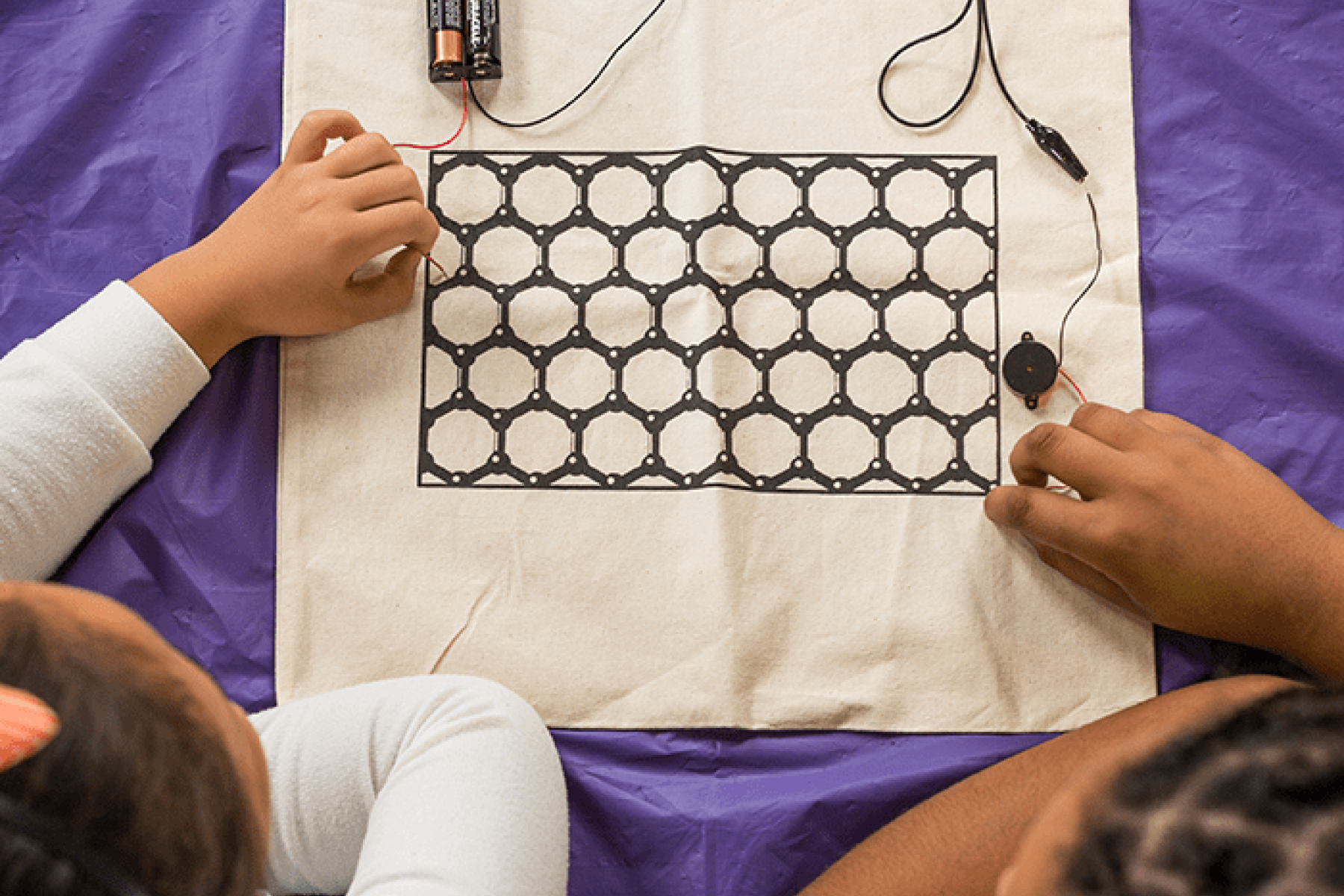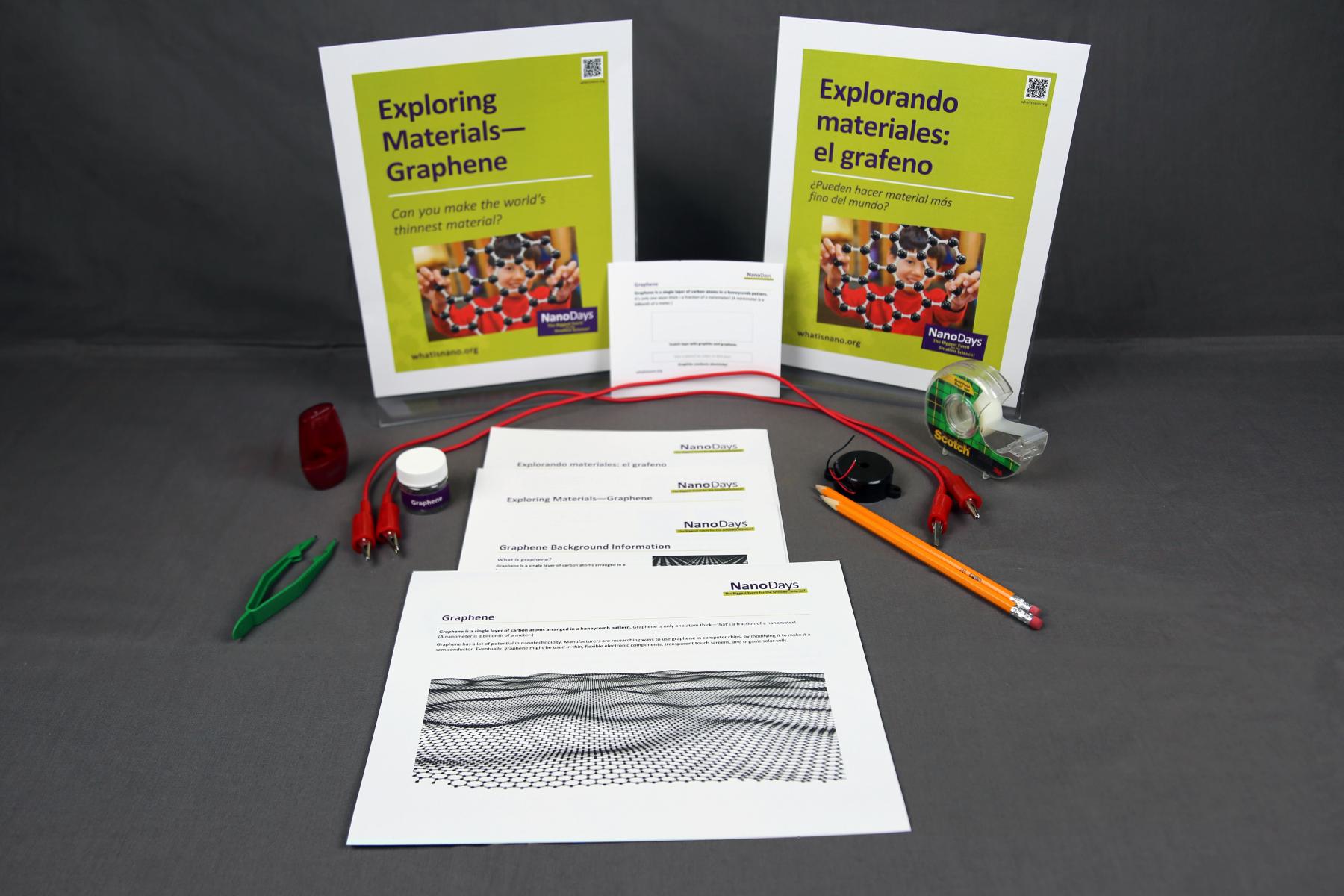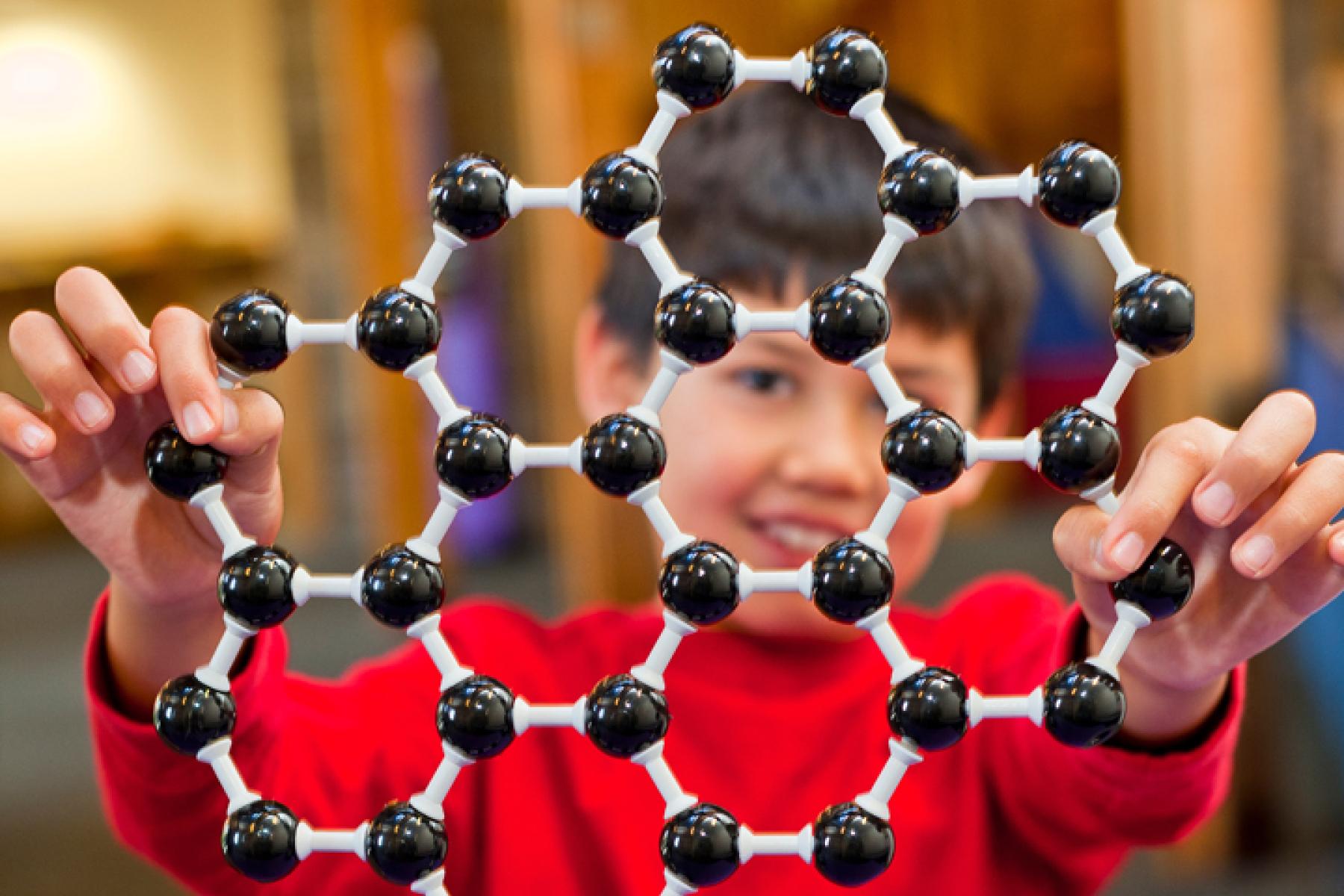DESCRIPTION
"Exploring Materials - Graphene" is a hands-on activity in which visitors use tape and graphite to make graphene and test the conductivity of graphite. They learn that graphene is a single layer of carbon atoms arranged in a honeycomb pattern. There are two versions of this activity, one that uses an LED to test the conductivity and one that uses a buzzer. "Explore Science - Zoom info Nano Draw a Circuit" (2016) version designed for groups and community outreach.
DESCRIPTION
"Exploring Materials - Graphene" is a hands-on activity in which visitors use tape and graphite to make graphene and test the conductivity of graphite. They learn that graphene is a single layer of carbon atoms arranged in a honeycomb pattern. There are two versions of this activity, one that uses an LED to test the conductivity and one that uses a buzzer. "Explore Science - Zoom info Nano Draw a Circuit" (2016) version designed for groups and community outreach.
TRAINING VIDEOS
OBJECTIVES
BIG IDEA
Graphene is a single layer of carbon atoms arranged in a honeycomb pattern.
LEARNING GOALS
Graphene is a single layer of carbon atoms arranged in a honeycomb pattern.
Graphene can be a semi-conductor.
NANO CONTENT MAP
Nanometer-sized things are very small, and often behave differently than larger things do.
Nanoscience, nanotechnology, and nanoengineering lead to new knowledge and innovations that weren't possible before.
DOWNLOAD FILES
- Exploring Materials Graphene - Guide (Buzzer version) (DOC)
- Exploring Materials Graphene - Guide (Buzzer version) (PDF)
- Exploring Materials Graphene - Sign (Buzzer version) (PDF)
- Exploring Materials Graphene - Guide (LED version) (DOC)
- Exploring Materials Graphene - Guide (LED version) (PDF)
- Exploring Materials Graphene - Sign (LED version) (PDF)
- Exploring Materials Graphene - Graphene Sheet (DOC)
- Exploring Materials Graphene - Graphene Sheet (PDF)
- Exploring Materials Graphene - Cards (DOC)
- Exploring Materials Graphene - Cards (PDF)
- Tips for Engaging Girls - Graphene (PDF)
- Packing instructions for the Draw a Circuit activity from the Explore Science-Nano kit (pdf)
- Exploring Materials Graphene - Kit Materials (JPG)
- Exploring Materials Graphene - Guide (Buzzer version) (Spanish) (doc)
- Exploring Materials Graphene - Guide (Buzzer version) (Spanish) (pdf)
- Exploring Materials Graphene - Sign (Buzzer version) (Spanish) (pdf)
- Exploring Materials Graphene - Guide (LED version) (Spanish) (pdf)
- Exploring Materials Graphene - Sign (LED version) (Spanish) (pdf)
- Exploring Materials Graphene - Cards (Spanish) (pdf)
- Exploring Materials Graphene - Graphene Sheet (Spanish) (pdf)
Credits
Science Museum of Minnesota
Developed for the NISE Network with funding from the National Science Foundation under Award Numbers 0532536 and 0940143. Any opinions, findings, and conclusions or recommendations expressed in this product are those of the authors and do not necessarily reflect the views of the Foundation.
Creative Commons Attribution Non-Commercial Share Alike 3.0 United States (CC BY-NC-SA 3.0 US).
View more details

NISE Network products are developed through an iterative collaborative process that includes scientific review, peer review, and visitor evaluation in accordance with an inclusive audiences approach. Products are designed to be easily edited and adapted for different audiences under a Creative Commons Attribution Non-Commercial Share Alike license. To learn more, visit our Development Process page.




